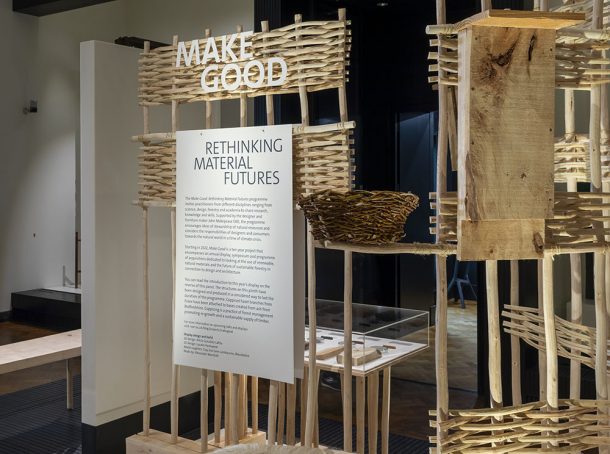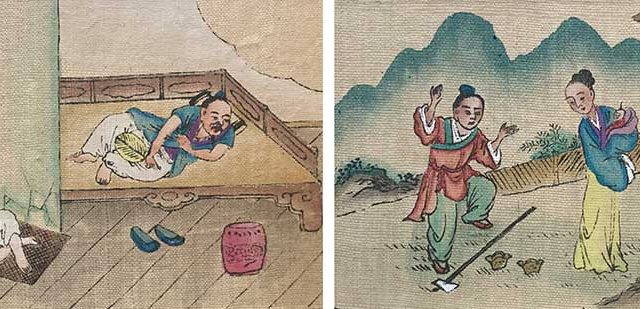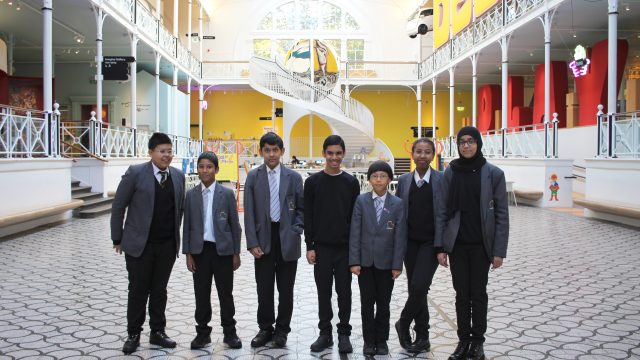The Make Good: Rethinking Material Futures programme of display, symposium and acquisitions launched in February 2022. In the Dr Susan Weber Furniture Gallery, the From the Forest display explores work from a variety of makers engaging with questions around environmental stewardship and the sustainable use of wood and plants. I wanted to share some of what’s on show (other posts, coming soon, will feature new objects).
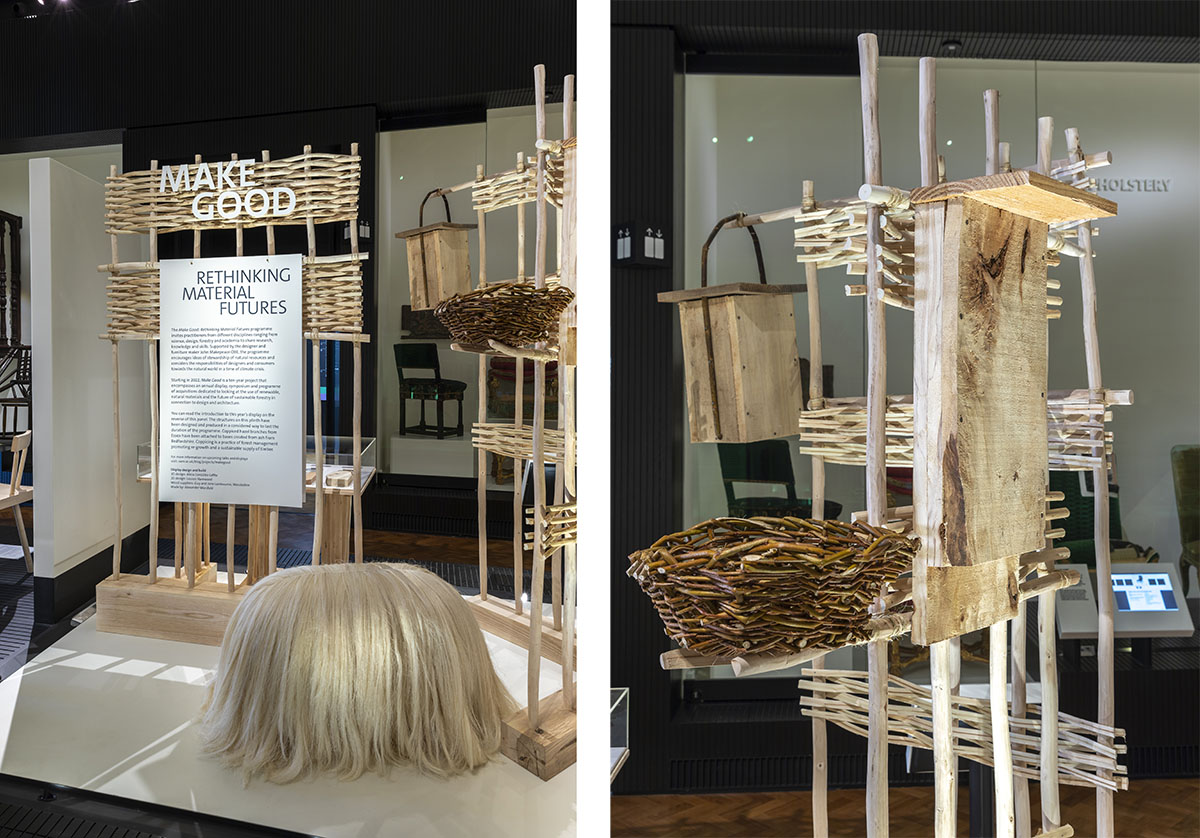
Perched on reusable display furniture made from coppiced wood, are three nesting boxes. They were designed and made by the French farmer and ornithologist Sebastien Blache for his organic wild farm, Grand Laval, in the Drome region of France.
Work at the farm was conceived as a reaction to the impoverished biodiversity caused by the industrialisation of farming in the 1970s. There, the team focuses on rebuilding natural habitats through their practice and, to do so, spent the last decade planting thousands of trees. But ’planting trees is not enough,’ says Blache. ‘You have to make an effort to bring in biodiversity.’ The woods are part of a larger ecosystem that includes insects, birds, goats, cattle and plant cultures – all benefitting from each other’s presence.
Their approach to agroforestry attracted an increased number of nesting bird species on the farm. Fifteen years ago, there were only 20 listed species, but the last count identified 50! Nesting boxes were essential to this development. They offer a temporary home to species while forests grow, as young trees cannot yet offer the holes and cavities needed for birds and bats to breed in.
But when it comes to nesting boxes, we are far removed from the concept of ‘one-size-fits-all’. Each box is designed to mimic the natural habitat of a specific species.

This nesting box is built from planks of black poplar, and hooked by a wicker handle. It mimics the holes of great spotted and European green woodpeckers that are often used by starlings, tree sparrows, blue and great tits.
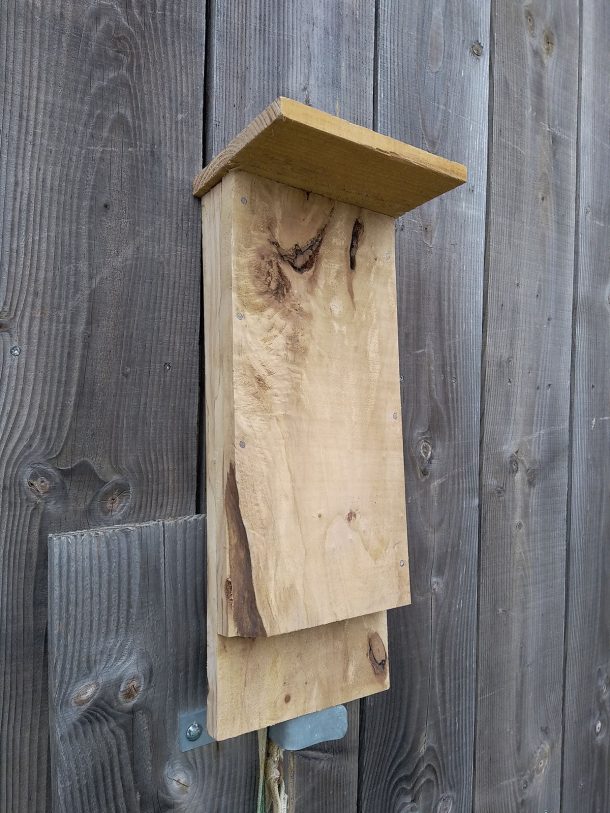
Here, the two juxtaposed planks tied to a pole simulate bark peeling of off a tree, a spot favoured by pipistrelle bats and their pups.
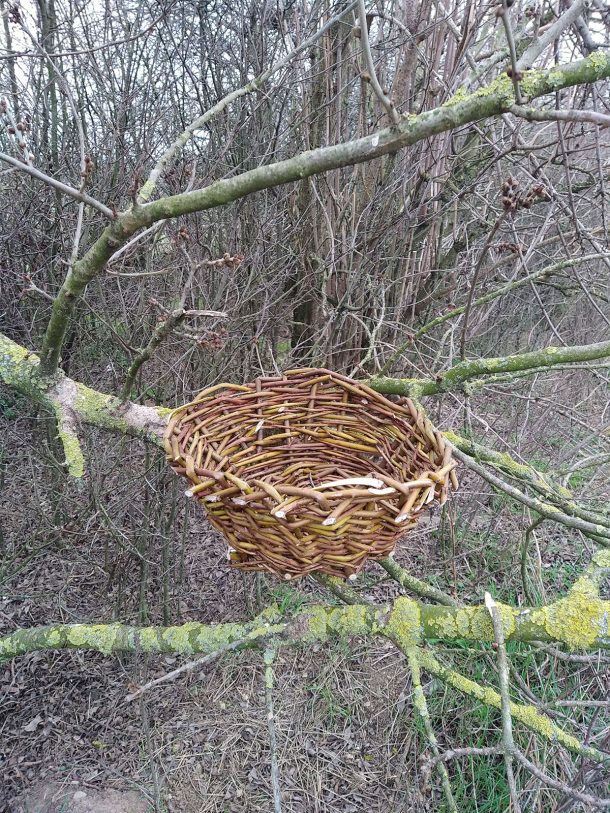
In fact, Blache explains that ‘woods from the farm and local area are always preferred to build our nesting boxes’. ‘Wicker and poplar grow by the nearby stream, and some wood is cut with a mobile sawmill on the farm’, he adds. To avoid wastage, the generated sawdust was even repurposed as a packing material protecting the nesting boxes from shocks during their travel to the museum!
The Grand Laval’s farm project demonstrates how managing and ‘exploiting’ forests and land can be considered as an act of care, and even have a positive impact on biodiversity.
Come and see the nests on display in the Susan Weber Furniture Gallery. The display will remain open until Autumn 2022.
